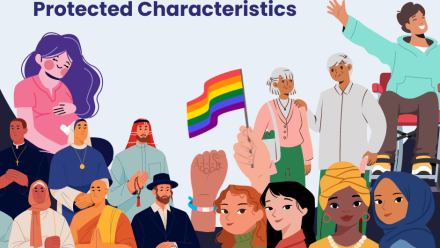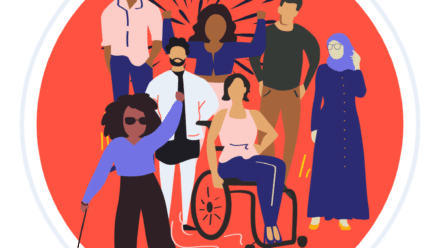Why Everyone Wins With Intersectional Leadership
22nd January 2024 by Ellie Thompson

Imagine a team where voices are heard, ideas spark, and progress thrives. Not because everyone thinks the same, but because they each think differently. It’s a team where challenges are tackled from all angles, fueled by the diverse lived experiences of each member, creating environments and introducing solutions that break the mould.
That’s what intersectional leadership enables. It’s a new, powerful approach to leadership that embraces the unique backgrounds, experiences, thoughts and perspectives of each individual.
Before we begin: it’s important, as always, to acknowledge and appreciate feminist scholar Kimberlé Crenshaw, who first introduced the concept of intersectionality. Find out more about what intersectionality means, and why it matters.
Three steps to becoming an intersectional leader
Step One: Awareness
Recognise and address your own biases and privileges, and how they shape your interactions with others.
Step Two: Action
Actively listen to diverse voices
Although reading books, watching documentaries and attending webinars is a good (and essential) way of expanding your perspective, it’s equally important to listen to the experiences and thoughts of those much closer to home.
Create channels for your team members to share their ideas and suggest improvements (and make sure you acknowledge, respond to, and action their suggestions!)
Champion change
Take it from us: people who experience forms of discrimination and exclusion notice when you stay silent. Leadership that embraces an intersectional approach goes beyond general statements of commitment to equity and justice. It’s about actively speaking out against injustice, even when doing so may come with risks or challenges, like when it might impact external client relationships.
This is how you can signal to your employees that you’re not just talking the talk, you’re walking the walk both within the remit of your leadership role and in your everyday life.
Create inclusive practices
This could include arranging equity, diversity and inclusion consultancy, introducing flexible working arrangements, and enacting diverse hiring practices.
Top tip: One thing we do at Diversity and Ability is regularly share free and open-source assistive technology software that might make work (and life) easier! Check out our resources page for tech to share with your teams.
Step Three: Reflection
Remember that effective leadership- especially intersectional and inclusive leadership- is about continuous learning and long-term reflection. Make sure you’re encouraging feedback, being open about your mistakes and how you’ll learn from them, and keeping your eyes and ears open to new perspectives, ideas and stories.
Want to hear from the experts?
As part of our Labels and Legacies series ‘Embracing Interseectionality’ we’re hosted guests who have been delivering on intersectional leadership for many years to discuss ‘What does it mean to be an intersectional leader?’. Get access to the series on Spotify.


